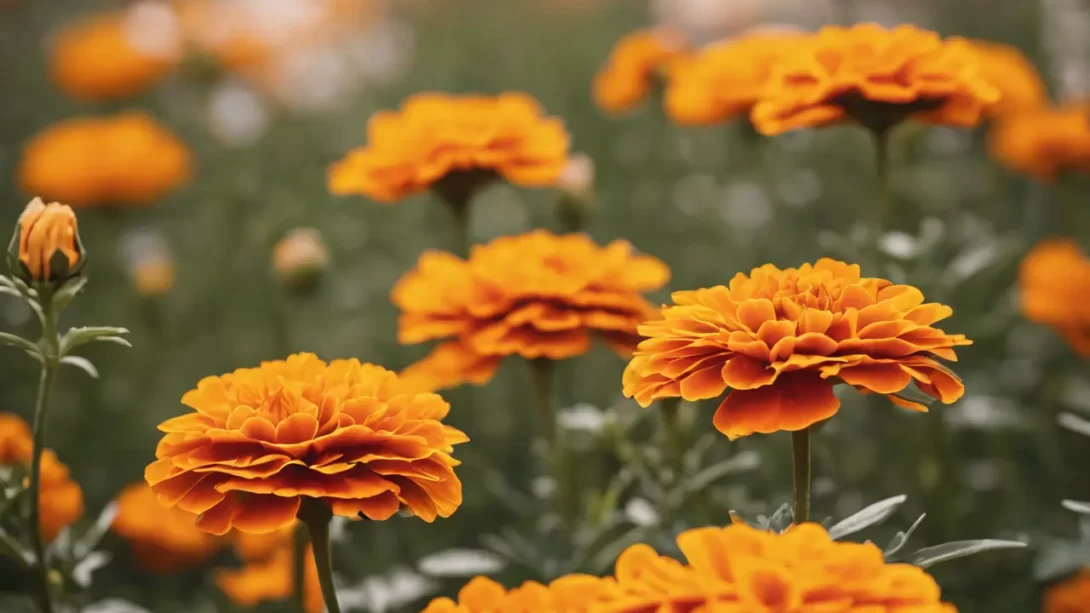Marigolds are a vibrant and popular choice for gardeners seeking to add color and life to their gardens. These flowers are not only beautiful but also easy to grow, making them ideal for both novice and experienced gardeners. An important aspect of marigold care is deadheading, the process of removing spent blooms. This article will explore the benefits of deadheading marigolds and provide guidance on how to effectively perform this task to enhance the health and aesthetics of your garden.
Marigolds
Marigolds, belonging to the genus Tagetes, come in various types, including African, French, and signet marigolds. Each type has its unique characteristics, such as size, color, and blooming patterns. Marigolds are known for their bright yellow, orange, and red flowers, which can bloom from late spring until the first frost in autumn. These plants are not only valued for their ornamental appeal but also for their ability to repel garden pests and attract beneficial insects. Understanding the growth cycle and blooming patterns of marigolds is essential for effective garden management and maintenance.
The Benefits of Deadheading Marigolds
Deadheading marigolds is beneficial for several reasons. Primarily, it encourages the plant to produce more blooms. When spent flowers are removed, the plant redirects its energy from seed production to the development of new flowers. This results in a longer blooming period and a more vibrant display of colors. Additionally, deadheading helps maintain the overall health and appearance of the marigold plant. Removing old blooms prevents the onset of disease and keeps the plant looking tidy and attractive. It also stops the marigolds from self-seeding excessively, which can lead to overcrowding and competition for resources in the garden.
How to Deadhead Marigolds
Deadheading marigolds is a straightforward process that can greatly enhance the health and appearance of your garden. Here’s a step-by-step guide:
- Identifying Spent Blooms: Look for flowers that are wilting, fading in color, or drying out. These are the blooms that need to be removed.
- Timing: The best time to deadhead is when you notice the quality of the bloom deteriorating. Regularly inspecting your marigolds will help you determine the optimal time for deadheading.
- Proper Technique: Use your fingers or a pair of gardening shears to gently remove the spent flower heads. Make the cut just above the first set of healthy leaves below the spent bloom. This encourages new growth and helps maintain the shape of the plant.
- Safety and Efficiency: If using shears, ensure they are clean and sharp to make a clean cut and prevent damage to the plant. Always wear gardening gloves to protect your hands.
After Deadheading: Care and Maintenance
Following deadheading, it’s important to continue proper care and maintenance of your marigolds to ensure they remain healthy and vibrant:
- Watering: Marigolds prefer well-drained soil and do not like to be overwatered. Water them when the soil feels dry to the touch.
- Fertilizing: While marigolds are not heavy feeders, an occasional light application of a balanced fertilizer can promote vigorous growth and blooming.
- Pest Control: Regularly check for pests and treat them promptly if found. Marigolds are generally resistant to pests, but they can occasionally attract aphids and other insects.
- Sunlight: Ensure your marigolds are receiving adequate sunlight, as they thrive in full sun.
By following these after-care tips, you can ensure that your marigolds continue to flourish throughout the blooming season. Deadheading, combined with proper care, will result in a healthier and more aesthetically pleasing marigold display in your garden.
Alternative Practices to Deadheading
While deadheading is beneficial for enhancing the bloom and appearance of marigolds, some gardeners may prefer a more natural approach. Allowing marigolds to self-seed can lead to spontaneous growth in the next season, creating a natural and varied garden landscape. This low-maintenance approach can be particularly appealing for gardeners who appreciate an organic, less structured garden style. However, it’s important to consider that self-seeding can result in dense growth, which might require thinning to prevent overcrowding and competition for resources.
For those seeking to reduce the need for frequent deadheading, selecting certain varieties of marigolds can be helpful. Some dwarf or compact varieties may require less maintenance, while still providing the vibrant colors and pest-repelling benefits that marigolds are known for. Additionally, integrating marigolds into a garden design that embraces a wilder, more natural aesthetic can minimize the need for regular deadheading.
Conclusion
Deadheading marigolds is a simple yet effective gardening practice that enhances the vibrancy and health of these popular flowers. By regularly removing spent blooms, gardeners can encourage a longer blooming period, prevent disease, and maintain a neat garden appearance. For those who prefer a more hands-off approach, allowing marigolds to self-seed or choosing low-maintenance varieties can also yield beautiful results. Regardless of the chosen method, incorporating marigolds into your garden not only adds a splash of color but also contributes to a healthier and more diverse ecosystem. Whether meticulously maintained or left to grow more naturally, marigolds offer a versatile and rewarding addition to any garden.



